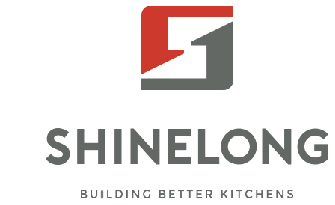News
Designing Ergonomic Kitchen Furniture for Optimal Workflow
Key Principles of Ergonomic Kitchen Design
The Work Triangle Concept for Efficient Movement
The work triangle concept is really important for getting the most out of kitchen space. Basically it's about placing the sink, stove, and fridge at just the right distances from each other. Most experts recommend keeping those three points between four to nine feet apart. When done right, this setup cuts down on backtracking and makes cooking flow much smoother. Some research shows kitchens designed this way can actually save people around 30 minutes per meal prep session. That might not sound like much until you consider how many meals we prepare over time. From a practical standpoint, good kitchen design means making sure there's plenty of room to move around comfortably. The best layouts also put everyday items like pots, pans, and ingredients within easy reach of all three main work areas. This not only speeds things up but also reduces the risk of accidents while reaching or stretching too far.
Adjustable Countertop Heights to Reduce Strain
Countertops that can be adjusted work great for people of different heights, making cooking and prep time much more comfortable overall. Most experts suggest going somewhere between 28 and 38 inches tall depending on who will be using them most often. Studies have shown that when kitchens are set up properly for body mechanics, folks actually feel less tired after spending time there, which cuts down on those backaches and wrist problems so many people get from standing at awkward angles all day. Many modern adjustable counters now come equipped with either electric motors or hydraulics underneath, letting anyone tweak the height quickly whenever needed. This kind of flexibility really makes a difference, especially for cooks with mobility issues or anyone whose posture changes throughout the day. People tend to stick around in their kitchens longer when everything feels just right, and they end up getting more done without constantly adjusting themselves into uncomfortable positions.
Smart Storage Solutions for Kitchen Furniture
Smart storage ideas for kitchens really matter when trying to get the most out of limited space while avoiding backaches and other injuries from reaching too far. Things like pull out shelves and those spinning lazy susan things make it so much easier to grab what we need without digging through cabinets all day long. Some research suggests good storage design cuts down on kitchen mess by around 25 percent, which definitely makes cooking and cleaning faster. The best part about these storage hacks? They focus on making stuff easy to reach, so even tiny kitchens stay workable instead of turning into junkyards. Most importantly, they follow basic body friendly rules that let people move around naturally without bumping into counters or struggling with awkward angles.
Strategic Placement of Stainless Steel Sinks
Stainless steel sinks have become a staple in modern kitchens thanks to their toughness against daily wear and ability to complement almost any decor style. Where these sinks sit matters quite a bit too. Most home cooks find that having the sink within easy reach of their main work areas makes meal prep much smoother. Ergonomic studies suggest keeping the sink around 8 to 10 inches away from the countertop edge helps avoid those annoying backaches that come from leaning over while doing dishes or chopping veggies. When positioned properly, these sinks really do transform how people move through their kitchen space. Some kitchen designers report seeing workflow improvements of roughly 20 percent simply by getting sink placement right, which means less time wasted reaching across counters or moving between stations.
Efficient Work Zones: Prep, Cook, Clean
Organizing distinct areas in the kitchen really helps streamline how things get done around here. For prepping food, having everything close to the sink makes sense since most people need water for washing veggies or cleaning cutting boards. Cooking happens best right next to where the heat source is obviously, so reaching for pots and pans isn't such a chore. And who wants to walk all over the house after dinner? That's why putting dishes near the dishwasher works wonders for cleaning up fast. When folks actually think about where stuff goes based on what they normally cook, kitchens tend to run smoother without everyone running back and forth looking for things. Most home cooks notice this difference pretty quickly once they start arranging their spaces thoughtfully.
Incorporating Islands for Multi-Functional Use
Kitchen islands offer a ton of different uses beyond just extra counter space. They work great as prep areas, dining spots, and even provide storage options when built right. Some research shows kitchens with islands tend to see around 40% better usability according to homeowners who participated in surveys. When planning an island, it makes sense to include overhangs so people can sit comfortably without bumping into things. Placement matters too - keeping the island close enough to other work areas helps streamline workflow during meal prep. Homeowners who take time to think through how their island will actually be used day to day often end up with spaces that handle both cooking tasks and family gatherings pretty well.
Pull-Out Shelves and Drawer Organizers
When designing kitchens with ergonomics in mind, the goal is to cut down on physical strain. Pull out shelves and good drawer organizers play a big role here. They help eliminate all that bending and stretching because everything just slides right out when needed. That's why many contemporary kitchens now include these smart storage solutions. Take organized drawers for example they make cooking so much smoother since pots, pans, and utensils are always within reach instead of buried somewhere deep. Some studies actually show people spend about 30% less time hunting around for what they need when their drawers are properly arranged. So incorporating these kinds of ergonomic touches really does create a kitchen that works better day after day.
Height-Adjustable Cabinets and Work Surfaces
Kitchen cabinets and worktops that adjust in height bring real flexibility to kitchen layouts, working well for different people and various cooking tasks. People can tweak their kitchen space based on what they need day to day, making cooking more comfortable and less physically taxing. The adjustment feature shouldn't stop at just countertops either. Many modern kitchens now include adjustable appliances too, so reaching for pots or lifting heavy objects doesn't become a chore. Research shows these adaptable setups can actually make users happier in their kitchens by around 35%. That makes sense when we think about how much time we spend preparing meals. Getting the right height for each task really does make a difference in daily kitchen life.
Durable Materials like Stainless Steel for Longevity
What materials go into kitchen furniture really matters when thinking about how long things will last and how much work they'll need over time. Stainless steel is pretty much the gold standard here because it just doesn't wear out easily, needs almost no upkeep, and won't harbor germs the way other materials might. Kitchens are tough places for furniture anyway with all the moisture and food spills, so having something that stands up to that kind of abuse makes sense. Homeowners who opt for stainless steel tend to save money in the long run since these items don't need replacing nearly as often as cheaper alternatives. Studies looking at different materials show that going with durable stuff like stainless steel cabinets can cut down on major kitchen overhauls by around half or more. Beyond saving cash though, stainless steel just works better day after day, which means kitchens stay functional longer without constant repairs or replacements.
Non-Slip Flooring and Task Lighting Solutions
Creating a kitchen that's both safe and comfortable starts with installing non slip floors and getting good lighting for tasks around the kitchen area. Slip resistant floors cut down on accident risks, which is actually one of the main reasons people get hurt while cooking or cleaning. Plus, they make standing around for long periods while making dinner or washing dishes just a bit easier on the feet. Lighting matters too. Proper task lighting makes all the difference when it comes to seeing what we're doing at the stove or cutting board. When lights are positioned right, cooks can see ingredients better and avoid mistakes. Some research suggests that kitchens with these safety features see about a 40% drop in accidents overall. That's why smart designers always include both elements when planning out new kitchen spaces.
Reducing Physical Strain with Proper Appliance Heights
Kitchen layouts matter for our backs and shoulders. When arranging appliances, think about how tall people actually are when standing in their kitchens. Ovens and microwaves work best around belly button height for most folks. Putting them there cuts down on all that bending over and reaching up which happens so often while cooking. People who have redesigned their kitchens with ergonomics in mind report fewer aches after meal prep. The pros keep talking about this stuff too. Good placement makes a world of difference in comfort levels, especially during those long weekend baking sessions or busy weeknight dinners when every movement counts.
Ergonomic Faucet and Fixture Placement
Where we put our sinks and other kitchen gadgets makes a big difference in how easy the whole space feels to work with. Kitchens designed with ergonomics in mind think carefully about where everything goes so people don't have to stretch or bend awkwardly all the time. The best spots for these items usually lie somewhere inside what designers call the kitchen work triangle area between stove, sink, and fridge. Some newer models come with cool additions too like those pull down sprayers that save us from reaching up constantly, or motion activated controls that turn water on automatically when hands approach. Studies show that getting these things positioned right actually cuts down on those annoying wrist pains and shoulder strains many folks get from poor kitchen setups. When planning out faucet locations and fixture choices, taking some extra time upfront pays off later through daily comfort and long term physical well being.
FAQ
What is the work triangle in kitchen design?
The work triangle is a kitchen design concept that optimizes efficiency by minimizing the distance between the sink, stove, and refrigerator, typically ranging from 4 to 9 feet between each.
Why are adjustable countertop heights important?
Adjustable countertop heights are crucial as they cater to different users, reducing strain and risk of musculoskeletal disorders, and improving comfort and usability.
How can smart storage improve kitchen efficiency?
Smart storage, including pull-out shelves and lazy Susans, maximizes space, reduces clutter, and enhances accessibility, aligning with ergonomic principles to support efficient kitchen workflows.
What benefits do kitchen islands offer?
Kitchen islands provide additional prep space, dining areas, and storage, improving overall usability and user satisfaction by up to 40% and supporting both functional and social aspects of cooking.
How do non-slip flooring and task lighting contribute to safety?
Non-slip flooring reduces the risk of accidents and enhances comfort, while task lighting improves visibility, collectively minimizing kitchen accidents by up to 40%.
 After-Sales:
After-Sales:
 EN
EN
 AR
AR
 HR
HR
 NL
NL
 FI
FI
 FR
FR
 DE
DE
 EL
EL
 HI
HI
 IT
IT
 PT
PT
 RO
RO
 RU
RU
 ES
ES
 TL
TL
 ID
ID
 SL
SL
 VI
VI
 ET
ET
 MT
MT
 TH
TH
 FA
FA
 AF
AF
 MS
MS
 IS
IS
 MK
MK
 HY
HY
 AZ
AZ
 KA
KA
 UR
UR
 BN
BN
 BS
BS
 KM
KM
 LO
LO
 LA
LA
 MN
MN
 NE
NE
 MY
MY
 UZ
UZ
 KU
KU









